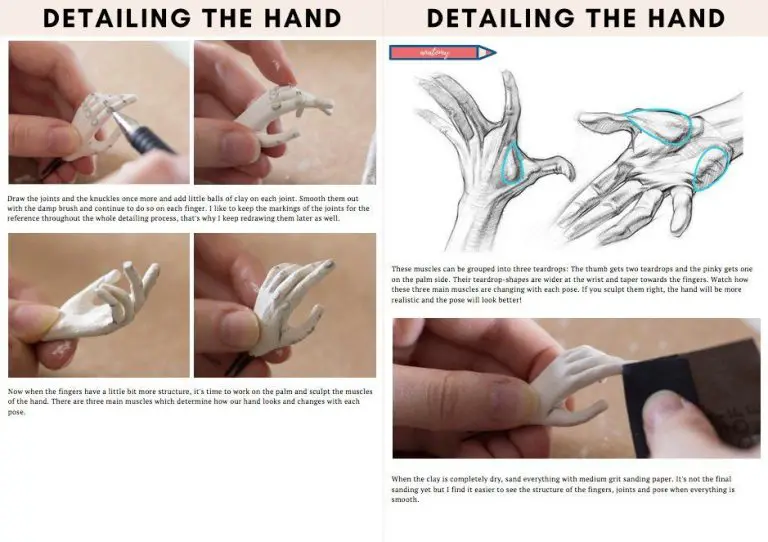Do Ceramic Artists Make Money?
In today’s society, it is becoming increasingly difficult for artists to earn a living solely through their creative work. With the rise of digital media and an oversaturated art market, many wonder if pursuing a career in the arts is still a viable option. This is especially true for ceramic artists, who pour endless hours into designing, sculpting, and firing their intricate clay pieces. Can these artisans realistically expect to profit from their craft in the 21st century? Or is “starving artist” now simply a reality for those who choose this path?
This article will examine the financial prospects and realities that today’s ceramic artists face. We’ll look at education requirements, income potential, business costs, marketing hurdles, and keys to building a commercially successful ceramic art career. While certainly not impossible, making money as a ceramic artist requires creativity not only in design and execution, but also in business strategy, sales, and marketing. Read on to discover what it takes to turn clay into cash in the modern economy.
Definition of a Ceramic Artist
Ceramic art refers to artwork made from clay and other ceramic materials. Ceramic artists work with clay and ceramic materials to create art objects, decorative pieces, and functional ware. Ceramic art includes pottery, tile, figurines, and sculpture (Ceramic art – Wikipedia).
Ceramic artists mold, shape, and form clay into their desired creations. They may work by hand or use a potter’s wheel to shape basic forms. The clay is transformed through processes like firing, glazing, and finishing. Common ceramic materials include earthenware, stoneware, and porcelain (What is ceramic art? | Smarthistory). Ceramic art spans everything from decorative objects and tableware to large-scale public art installations.
Education and Training
There are several paths to gaining the skills needed to become a ceramic artist.
Many aspiring ceramic artists pursue a formal education. Bachelor’s degrees in ceramics, ceramic engineering, fine arts, or studio art are commonly available at art schools, universities, and colleges. Programs provide a foundation in ceramic materials, processes, design, history, and business practices. Some well-regarded schools for ceramic arts include Alfred University, the Rochester Institute of Technology, and Rhode Island School of Design.
Master’s of Fine Arts (MFA) programs offer advanced studies for ceramic artists wishing to teach at the university level or establish a professional art career. MFA programs typically take 2-3 years to complete. Some programs like the one at Alfred University require two years of full-time residence and 60 graduate credit hours. Tuition and fees for an MFA can range from $30,000-$60,000 total.
Apprenticeships provide an alternative to formal education. Aspiring ceramic artists can learn directly from experienced potters by working as studio assistants. This hands-on training teaches practical skills in studio operations, wheel throwing, glazing techniques, kiln firing, and more. Apprenticeships typically last 1-3 years.
Continuing education such as workshops, residencies, and classes allow ceramic artists to expand their skills. These short-term programs range from a few days to several weeks in length.
Income Potential
According to https://www.avgpay.com/salary/ceramic_artist/, the national average salary for a ceramic artist is $52,632 annually. However, salaries can vary greatly depending on location, experience level, reputation, and sales.
Many ceramic artists supplement their income through commissions, custom orders, public and private art sales, and teaching. Commissions allow artists to get paid for creating specific ceramic pieces for clients. Custom orders are similar, where clients request personalized ceramic wares. Some artists sell their pieces at art shows, craft fairs, galleries, retail stores, or online shops. Teaching ceramic arts classes, holding workshops, or providing private lessons offers additional income streams.
According to https://www.ziprecruiter.com/Salaries/Ceramic-Artist-Salary–in-Ontario, the hourly rate for ceramic artists in Ontario ranges from $16.56 to $34.95 per hour. Location, education, experience, sales, and reputation heavily influence earning potential.
While it may require significant effort to earn a livable wage solely from ceramic art sales and commissions, supplementing with teaching income can improve earning potential. With business savvy and creative marketing, ceramic artists can build fulfilling, financially sustainable careers.
Building a Career
Building a successful career as a ceramic artist requires dedication, passion, and persistence. Finding inspiration for new works, developing a unique style, and getting exposure are key steps in the process.
Many ceramic artists find inspiration in nature, their surroundings, emotions, or social issues (Green, 2022). Visiting museums, art exhibitions, and craft fairs exposes artists to techniques, materials, and styles that can spark new ideas. Establishing a daily creative practice like journaling or photographing interesting textures and colors also boosts inspiration.
Developing a distinct style allows ceramic artists to stand out. Experimenting with different materials, techniques like handbuilding or wheel throwing, glazes, and firing methods helps artists hone their skills and aesthetic. Mentorships with established ceramicists provide valuable techniques and feedback. Consistently producing new works and refining style takes time and practice.
Gaining exposure requires putting work out into the world through galleries, craft fairs, and online platforms. Social media provides a way for artists to share their process and finished pieces. Entering competitions and residencies gives credibility. Approaching ceramic studios, teaching opportunities, and commissions widens reach and cements reputation. Persistence and self-promotion are key (Ceramics Now, 2021).
Sources:
Green, J. (2022). How To Turn Pottery Into a Career. Indeed Career Guide.
Ceramics Now. (2021). Ceramic Artist. The Art Career Project.
Marketing and Sales
There are several effective ways for ceramic artists to market and sell their work, including through online galleries, craft fairs, and commissions.
Online galleries provide a great platform for ceramic artists to display and sell their work to a global audience. Sites like Etsy, ArtFinder, and Saatchi Art allow artists to create online “galleries” to showcase their pieces. The exposure on these sites provides opportunities for sales and commissions that artists may not be able to reach locally (source).
Craft fairs and art shows are venues where ceramic artists can sell their work directly to customers. Setting up a booth allows the artist to interact with attendees, explain their process, and make sales. While sales may be seasonal, these events provide exposure and allow the artist to gain a following (source).
Commissions allow ceramic artists to connect directly with clients to create customized, one-of-a-kind pieces. Artists may get commissioned jobs from interior designers, homeowners, or collectors seeking a specific creation. While time-intensive, commissions provide guaranteed sales and income for the artist.
Business Costs
Ceramic artists incur a number of business costs in order to create and sell their work. Some of the major expenses include:
Studio Space
Having a dedicated studio space is crucial for most ceramic artists. This could be a room in your home, a separate garage or outbuilding, or rented commercial space. Studio rental fees can range from $100 to over $1000 per month depending on the location and amenities (https://ceramicsfieldguide.org/chapter-3-being-professional-in-business/).
Equipment
A major investment for ceramic artists is equipment like pottery wheels, kilns, pug mills, and slab rollers. Prices range widely based on size and features, but expect to spend at least $1000 on a starter wheel and kiln. Ongoing costs include things like clay tools, replacement kiln shelves, and maintenance (https://www.artworkarchive.com/blog/is-it-deductible-your-art-business-expenses-addressed).
Materials
The raw materials for ceramic work like clay, glazes, and chemicals can be a substantial cost. A 25 lb bag of clay may cost $20-40. Glaze materials and specialized clays or tools also add up quickly. Expect materials to be 10-20% of gross sales (https://found.com/resources/common-tax-deductions-for-artists).
Financial Challenges
Making a consistent living as a ceramic artist can be challenging due to inconsistent income and high levels of competition. Ceramic artists may experience “feast or famine” cycles where they have a flurry of sales and commissions followed by long dry spells. According to professional ceramic artist Eric Jensen, “Getting consistent sales is one of the biggest struggles for artists” (source).
The ceramic art market is highly competitive, especially for emerging artists. Established artists with an existing collector base and reputation command higher prices. New ceramic artists must work diligently to build their skills, create a distinctive style, network with galleries and art fairs, and market themselves effectively. It can take years to build up a sustainable income stream solely from ceramic art sales and commissions.
To mitigate inconsistent income, many ceramic artists maintain part-time jobs, teach workshops or classes, take on freelance work, or find other sources of income while building their art career. Diversifying income streams and managing finances prudently is key to surviving the financial challenges and inconsistencies of a ceramic art career.
Keys to Success
While becoming a successful ceramic artist that can earn a living from their work is difficult, there are several keys that can help ceramic artists thrive in a competitive industry. Some of the most important include:
Persistence
Establishing a career in ceramics requires dedication and perseverance. Most ceramic artists spend years honing their skills and developing a unique style and brand before their work garners much commercial success. Artists must continue creating work, seeking opportunities, and promoting themselves even when sales are slow. Persistence through the inevitable ups and downs is critical.
Business Savvy
In addition to artistic talent, ceramic artists must cultivate business skills like marketing, branding, accounting, and customer service. Approaching ceramics as a business and developing skills beyond the studio can increase the chances of earning sustainable income. Business courses, mentors, and professional organizations can provide valuable support.
Unique Style
Having a distinctive personal style allows ceramic artists to stand out in a crowded field. Rather than following trends, artists should focus on developing their own aesthetic over many years. Consistency in style helps collectors recognize and invest in an artist’s work. A unique perspective displayed through clay can establish value.
Conclusion
To summarize, a career as a ceramic artist can be financially viable but it requires passion, dedication, business savvy, and perseverance. Ceramic artists need proper training through college programs or apprenticeships to develop their skills. While income potential varies greatly, most ceramic artists earn a modest living selling their work through galleries, art shows, online shops, and commissions. By managing expenses, diversifying income streams, and tirelessly promoting their work, successful ceramic artists can earn a full-time living from their art. However, the path is challenging due to high material costs, inconsistent income, and a competitive field. Keys to financial success include business knowledge, marketing skills, and creating a brand around distinctive work. With enough talent, determination, and entrepreneurial spirit, ceramic artists can make money doing what they love. While not an easy profession, it is certainly possible to build a career as a working ceramic artist.






